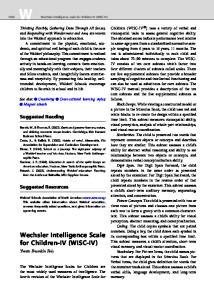Superconductivity in Clathrates Ba 24 IV 100 ( IV = Si and Ge ) with Rattling Motions
- PDF / 165,505 Bytes
- 6 Pages / 612 x 792 pts (letter) Page_size
- 24 Downloads / 286 Views
0988-QQ07-02
Superconductivity in Clathrates Ba24IV100 ( IV = Si and Ge ) with Rattling Motions Takeshi Rachi1, Ryotaro Kumashiro1, Hiroshi Fukuoka2, Syoji Yamanaka2, and Katsumi Tanigaki1 1 Department of Physics, Graduate School of Science, Tohoku University, 6-3, Aramaki AzaAoba, Aoba-ku, Sendai, 980-8578, Japan 2 Department of Applied Chemistry, Faculty of Engineering, Hiroshima University, HigashiHiroshima, Hiroshima, 739-8527, Japan
ABSTRACT Both Ba24Si100 and Ba24Ge100 with crystallographically identical structure are the superconductors whose critical temperatures are 1.45 and 0.27 K, respectively. Intriguingly, physical properties of the both compounds are extremely different. The observed differences are considered to be associated with Ba rattling motions. We have exemplified such unique motions in terms of x-ray diffraction data using MEM/Rietveld analyses. We present these exotic systems especially focusing on the relation between superconductivity and the rattling phonons. INTRODUCTION Among a variety of clathrates so far reported [1], the three types as shown in Fig. 1 have intensively been studied. The superconducting silicon network solid was discovered for Na2Ba6Si46 by Yamanaka’s group in 1995 [2], where Na and Ba atoms are accommodated as endohedral elements inside the silicon polyhedra of Si20 and Si24 in the type I clathrates. Subsequently, a binary system Ba8Si46 was successfully synthesized by the same group using high pressure syntheses [3]. Although the attempts to synthesize Ge46 compounds with the crystallographically identical structure have been made, no apparent such success has so far been reported [4]. In contrast to Si46 network system (type I clathrate), the superconductivity in the type III clathrates was found in Ba24Ge100 [5] by the group from the MaxPlanck Institute at Dresden [6]. Although the superconducting transition temperature of Tc at 270 mK found in Ba24Ge100 was very low, Tc rises up to 3.8 K by applying pressure. This is categorized to one that can be very unique like a certain group of high Tc copper oxide superconductors. Ba24Si100 with the identical crystal structure to that of Ba24Ge100 [5,7] was synthesized under high pressure [8], but superconductivity was not reported at that time. However, our soft x-ray studies on Ba24Si100 showed that the density of states at the Fermi level is sufficiently large and the superconductivity has been searched for a high quality sample. Consequently, it was found that Ba24Si100 is also a superconductor [9,10]. The both silicon and germanium clathrates of Ba24IV100 (IV=Si and Ge) with identical crystal structure are superconductors. Because this is a situation that superconductivity occurs both in the Si and Ge polyhedral network solids with crystallographically identical structure after the discovery of superconductivity for these families in 1995, the direct comparison on the fundamental physical properties between these two superconductors shall give many important insights into the mechanism of superconductivity [11-13].
W
Data Loading...











